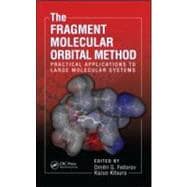
| Editors | p. vii |
| Contributors | p. ix |
| Introduction | p. 1 |
| Theoretical Background of the Fragment Molecular Orbital (FMO) Method and Its Implementation in Gamess | p. 5 |
| Developments of FMO Methodology and Graphical User Interface in Abinit-Mp | p. 37 |
| Excited States of Photoactive Proteins by Configuration Interaction Studies | p. 63 |
| The Fragment Molecular Orbital-Based Time-Dependent Density Functional Theory for Excited States in Large Systems | p. 91 |
| FMO-MD: An Ab Initio-Based Molecular Dynamics of Large Systems | p. 119 |
| Application of the FMO Method to Specific Molecular Recognition of Biomacromolecules | p. 133 |
| Detailed Electronic Structure Studies Revealing the Nature of Protein-Ligand Binding | p. 171 |
| How Does the FMO Method Help in Studying Viruses and Their Binding to Receptors? | p. 193 |
| FMO as a Tool for Structure-Based Drug Design | p. 217 |
| Modeling a Protein Environment in an Enzymatic Catalysis: A Case Study of the Chorismate Mutase Reaction | p. 245 |
| Index | p. 269 |
| Table of Contents provided by Ingram. All Rights Reserved. |
The New copy of this book will include any supplemental materials advertised. Please check the title of the book to determine if it should include any access cards, study guides, lab manuals, CDs, etc.
The Used, Rental and eBook copies of this book are not guaranteed to include any supplemental materials. Typically, only the book itself is included. This is true even if the title states it includes any access cards, study guides, lab manuals, CDs, etc.